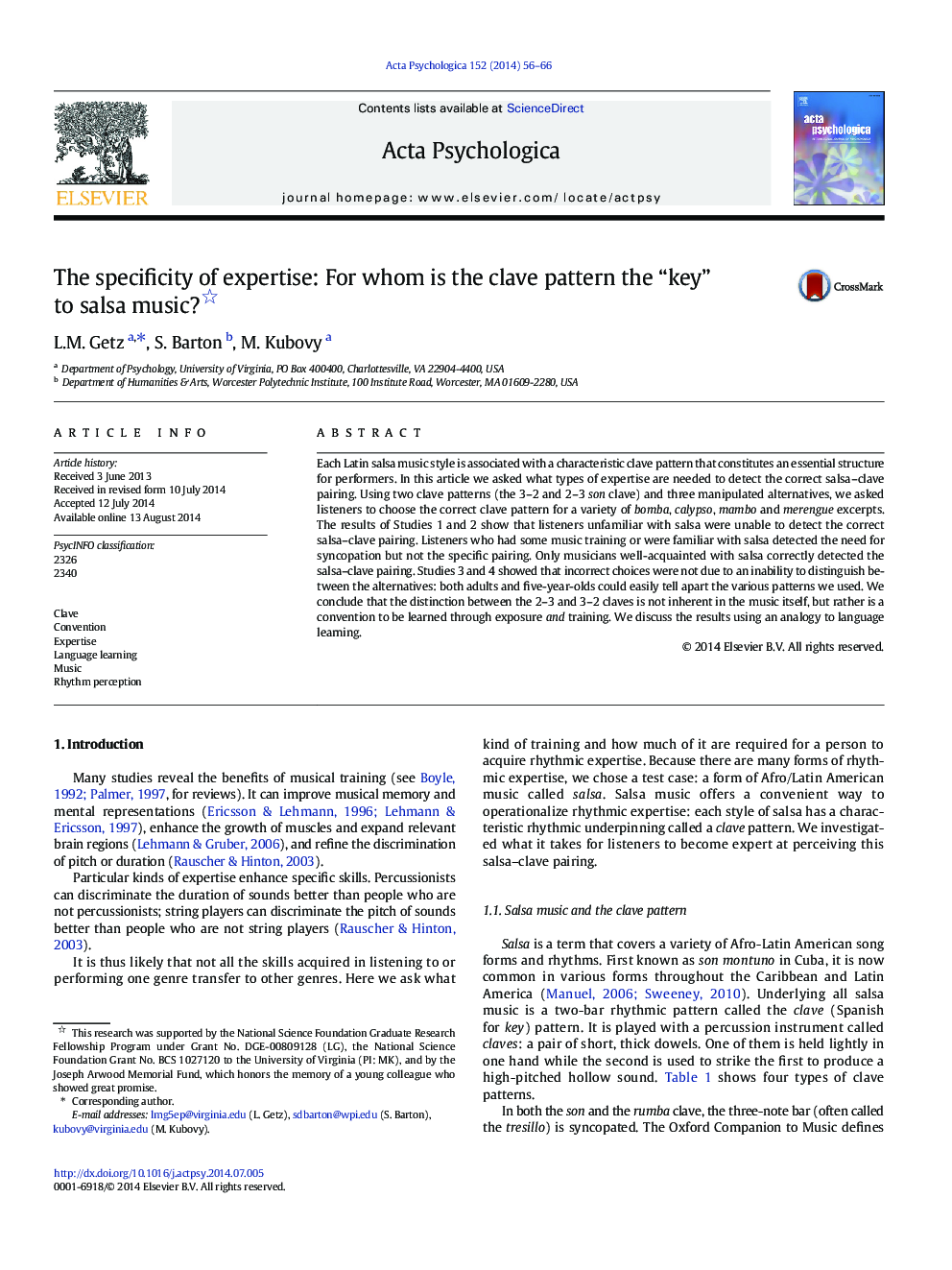| Article ID | Journal | Published Year | Pages | File Type |
|---|---|---|---|---|
| 919786 | Acta Psychologica | 2014 | 11 Pages |
•Trained musicians who are familiar with salsa correctly detect salsa–clave pairing•Listeners without music training or salsa familiarity are unable to detect pairing•Adult and five-year-old listeners can perceive differences between rhythm patterns•Rhythm perception is genre-specific, opposing the unitary nature of music expertise
Each Latin salsa music style is associated with a characteristic clave pattern that constitutes an essential structure for performers. In this article we asked what types of expertise are needed to detect the correct salsa–clave pairing. Using two clave patterns (the 3–2 and 2–3 son clave) and three manipulated alternatives, we asked listeners to choose the correct clave pattern for a variety of bomba, calypso, mambo and merengue excerpts. The results of Studies 1 and 2 show that listeners unfamiliar with salsa were unable to detect the correct salsa–clave pairing. Listeners who had some music training or were familiar with salsa detected the need for syncopation but not the specific pairing. Only musicians well-acquainted with salsa correctly detected the salsa–clave pairing. Studies 3 and 4 showed that incorrect choices were not due to an inability to distinguish between the alternatives: both adults and five-year-olds could easily tell apart the various patterns we used. We conclude that the distinction between the 2–3 and 3–2 claves is not inherent in the music itself, but rather is a convention to be learned through exposure and training. We discuss the results using an analogy to language learning.
